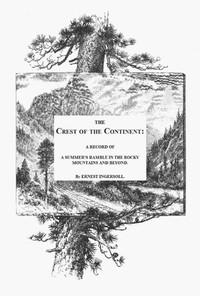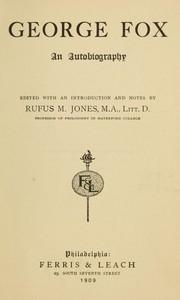|
|
Read this ebook for free! No credit card needed, absolutely nothing to pay.Words: 143348 in 28 pages
This is an ebook sharing website. You can read the uploaded ebooks for free here. No credit cards needed, nothing to pay. If you want to own a digital copy of the ebook, or want to read offline with your favorite ebook-reader, then you can choose to buy and download the ebook.

: The Crest of the Continent: A Summer's Ramble in the Rocky Mountains and Beyond by Ingersoll Ernest - West (U.S.) Description and travel; Rocky Mountains@FreeBooksWed 07 Jun, 2023 the suspicion! Possibly it was the popularly asserted effect of the rarefied atmosphere. But kinder to our self-esteem than either of these was the thought that our approaching journey had something to do with our elevation, and we accepted it as an explanation. It is the metropolis of the Rocky Mountains, and a stroll through these scores of solid blocks of salesrooms and factories exhibits at once the fact that it is as the commercial center of the mountainous interior that Denver thrives, and congratulates herself upon the promise of a continually prosperous future. She long ago safely passed that crisis which has proved fatal to so many incipient Western cities. Every year proves anew the wisdom and foresight of her founders; and I think her assertion that she is to be the largest city between Chicago and San Francisco is likely to be realized. Most of her leading business men came here at the beginning, but their energies were hampered when every article had to be hauled six hundred miles across the plains by teams. It frequently used to happen that merchants would sell their goods completely out, put up their shutters and go a-fishing for weeks, before the new semi-yearly supplies arrived. Everybody therefore looked forward, with good reason, to railway communication as the beginning of a new era of prosperity, and watched with keen interest the approach of the Union Pacific lines from Omaha and Kansas City. These were completed, by the northern routes, in 1869 and 1870; and a few months later the enterprising Atchison, Topeka and Santa Fe sent its tracks and trains through to the mountains, and then came the Burlington route, a most welcome acquisition, adding another link to the transcontinental chain, which now binds the East to the West, the Atlantic to the Pacific coast. At Pueblo, the Denver and Rio Grande, meeting the Atchison, Topeka and Santa Fe, was already prepared to make this new route available to Denver and much of Colorado, and adopting a liberal policy, at once exerted an immense influence upon the speedy development and prosperity of the State. Thus, in a year or two, the young city found itself removed from total isolation to a central position on various railways, east and west, and to its mill came the varied grist of a circle hundreds of miles in radius. Now blossomed the booming season of business which sagacious eyes had foreseen. The town had less than four thousand inhabitants in 1870. A year from that time her population was nearly fifteen thousand, and her tax-valuation had increased from three to ten millions of dollars. It was a time of happy investment, of incessant building and improvement, and of grand speculation. Mines flourished, crops were abundant, cattle and sheep grazed in a hundred valleys hitherto tenanted by antelope alone, and everybody had plenty of money. Then came a shadow of storm in the East, and the sound of the thunder-clap of 1873 was heard in Denver, if the bolt of the panic was not felt. The banks suddenly became cautious in loans; speculators declined to buy, and sold at a sacrifice. Merchants found that trade was dull, and ranchmen got less for their products. It was a "set-back" to Denver, and two years of stagnation followed. But she only dug the more money out of the ground to fill her depleted pockets, and survived the "hard times" with far less sacrifice of fortune and pride than did most of the Eastern cities. None of her banks went under, nor even certified a check, and most of her business houses weathered the storm. The unhealthy reign of speculation was effectually checked, and business was placed upon a compact and solid foundation. Then came 1875 and 1876, which were "grasshopper years," when no crops of consequence were raised throughout the State, and a large amount of money was sent East to pay for flour and grain. This was a particularly hard blow, but the bountiful harvest of 1877 compensated, and the export of beeves and sheep, with their wool, hides and tallow, was the largest ever made up to that time. The issue of this successful year with miner, farmer and stock-ranger, yielding them more than ,000,000, a large proportion of which was an addition to the intrinsic wealth of the world, had an almost magical effect upon the city. Commerce revived, a buoyant feeling prevailed among all classes, and merchants enjoyed a remunerative trade. Money was "easy," rents advanced, and the real estate business assumed a healthier tone. Generous patronage of the productive industries throughout the whole State was made visible in the quickened trade of the city, which rendered the year an important one in the history of Denver's progress. So, out of the barrenness of the cactus-plain, and through this turbulent history, has arisen a cultivated and beautiful city of 75,000 people, which is truly a metropolis. Her streets are broad, straight, and everywhere well shaded with lines of cottonwoods and maples, abundant in foliage and of graceful shape. On each side of every street flows a constant stream of water, often as clear and cool as a mountain brook. The source is a dozen miles southward, whence the water is conducted in an open channel. There are said to be over 260 miles of these irrigating ditches or gutters, and 250,000 shade-trees. For many blocks in the southern and western quarter of the town,--from Fourteenth to Thirtieth streets, and from Arapahoe to Broadway and the new suburbs beyond--you will see only elegant and comfortable houses. Homes succeed one another in endlessly varying styles of architecture, and vie in attractiveness, each surrounded by lawns and gardens abounding in flowers. All look new and ornate, while some of the dwellings of wealthy citizens are palatial in size and furnishing, and with porches well occupied during the long, cool twilight characteristic of the summer evening in this climate, giving a very attractive air of opulence and ease. Even the stranger may share in the general enjoyment, for never was there a city with so many and such pleasant hotels, the largest of which, the Windsor and the St. James, are worthy of Broadway or Chestnut street. Their climate is one of the things Denverites boast of. That the air is pure and invigorating is to be expected at a point right out on a plateau a mile above sea-level, with a range of snow burdened mountains within sight. From the beginning to the end of warm weather it rarely rains, except occasional thunder and hail storms in July and August. September witnesses a few storms, succeeded by cool, charming weather, when the haze and smoke is filtered from the bracing air, and the landscape robes itself in its most enchanting hues. The coldest weather occurs after New Year's Day, and lasts sometimes until April. Then come the May storms and floods, followed by a charming summer. The barometer holds itself pretty steady throughout the year. There is a vast quantity of electricity in the air, and the displays of lightning are magnificent and occasionally destructive. Sunshine is very abundant. One can by no means judge from the brightest day in New York of the wonderful glow sunlight has here. During 1884 there were 205 clear days, 126 fair, and 34 cloudy, the sun being totally obscured on only 18 days; and yet this record is more unfavorable than the average for a number of years. Summer heat often reaches a hundred in the shade at midday; but with sunset comes coolness, and the nights allow refreshing sleep. In winter the mercury sometimes sinks twenty degrees below zero; but one does not feel this severity as much as he would a far less degree of cold in the damp, raw climate of the coast. Snow is frequent, but rarely plentiful enough for sleighing. Denver is built not only with the capital of her own citizens, but constructed of materials close at hand. Very substantial bricks, kilned in the suburbs, are the favorite material. Then there is a pinkish trachyte, almost as light as pumice, and ringing under a blow with a metallic clink, that is largely employed in trimmings. Sandstone, marble and limestone are abundant enough for all needs. Coarse lumber is supplied by the high pine forests, but all the hard wood and fine lumber is brought from the East. The fuel of the city was formerly wholly lignite coal, which comes from the foothills; but the extension of the railway to Ca?on City, El Moro and the Gunnison, have made the harder and less sulphurous coals accessible and cheap. And while she has been looking well after the material attractions, Denver has kept pace with the progress of the times in modern advantages. She is very proud of her school-buildings, constructed and managed upon the most improved plans; of her fine churches, of her State and county offices, her seminaries of higher learning, and of her natural history and historical association. Her Grand Opera House is the most elegant on the continent, her business blocks are extensive and costly, and the Union Depot ranks with the best of similar structures. Gas was introduced several years ago, and the system, which now includes nearly all sections of the city, is being constantly improved and extended. The Brush electric light has been in very general use for nearly three years, and the Edison incandescent lamps are now being employed. The telephone is found in hundreds of business places and residences, the exchange at the close of last year numbering 709 subscribers. The water supply is distributed through forty miles of mains, the consumption averaging three million gallons per day, exclusive of the contributions of the irrigating ditches and the numerous artesian wells. The steam heating works evaporate one hundred thousand gallons of water daily, delivering the product through three miles of mains and nearly two miles of service pipes; this being the only company out of twenty seven of its nature in the country which has proved a financial success. Street car lines traverse the thoroughfares in all directions, and transport over two million passengers annually. Two district messenger companies are generously patronized. The regular police force consists of some forty-five patrolmen and detectives, aside from the Chief and his assistants; and a distinct organization is the Merchant's Police, numbering twenty men. A paid Fire Department is maintained, at an annual expense of ,000, and the alarm system embraces twenty-six miles of wire and fifty signal boxes. There are published six daily newspapers, one being in German, and a score of weeklies. All are well conducted and prosperous. A branch of the United States Mint is located here, but is used for assays only, and not for coinage. An appropriation has been made by Congress for a handsome building, the site has been selected, and work is now being pushed forward. The post-office is a source of considerable revenue to the Government. There are six National and two State banks, with a paid in capital of 0,000, and showing a surplus of 4,000 at the close of 1883. The deposits for the year amounted to ,396,200, and the loans and discounts approximated ,500,000. The shops of the Denver and Rio Grande railway are doubtless the most extensive in the West, employing over 800 men, and turning out during the year 2 express, 8 mail, 4 combination, 522 box, 303 stock, 25 refrigerator, 197 flat, and 300 coal cars, together with 8 cabooses. In addition they have produced 350 frogs, 200 switch stands, and all the iron work for the bridges on 350 miles of new road, The year's shipments of the Boston and Colorado Smelting Company aggregate, in silver, gold, and copper, ,907,000; and in the same time the Grant smelter has treated, in silver, lead and gold, ,348,868. Finally, from the statistics at hand it appears that the volume of Denver's trade for the year referred to, apart from the industries above mentioned, and real estate transactions, has exceeded the snug sum of ,856,998. In the meantime the taxable valuation of property in Arapahoe county has increased ,600,000. These facts establish, beyond the slightest doubt, the truth that Denver stands upon a firm financial basis. This the casual stranger can hardly fail to surmise when he glances at her magnificent buildings, and statistics will confirm the surmise. Denver society is cosmopolitan. Famous and brilliant persons are constantly appearing from all quarters of the globe. Five hundred people a day, it is said, enter Colorado, and nine-tenths of this multitude pass through Denver. Nowadays, "the tour" of the United States is incomplete if this mountain city is omitted. Thus the registers of her hotels bear many foreign autographs of world-wide reputation. Surprise is often expressed by the critical among these visitors at the totally unexpected degree of intelligence, appreciation of the more refined methods of thought and handiwork, and the knowledge of science, that greet them here. Matters of art and music, particularly, find friends and cultivation among the educated and generous families who have built up society; and there are schools and associations devoted to sustaining the interest in them, just as there are reading circles and literary clubs. And, withal, there is the most charming freedom of acquaintance and intercourse--the polish and good-breeding of rank, delivered from all chill and exclusiveness or regard for "who was your grandfather." Yet this winsome good-fellowship by no means descends to vulgarity, or permits itself to be abused. After all, it is only New York and New England and Ohio, transplanted and considerably enlivened. Returning to our consideration of Denver's resources, it will readily be seen that she stands as the supply-depot and money-receiver of three great branches of industry and wealth, namely, mining, stock-raising and agriculture. Free books android app tbrJar TBR JAR Read Free books online gutenberg More posts by @FreeBooks
: Heinosen perhe huvimatkalla Huvinäytelmä 2:ssa näytöksessä by Hodell Frans - Swedish drama Translations into Finnish@FreeBooksWed 07 Jun, 2023
|
Terms of Use Stock Market News! © gutenberg.org.in2025 All Rights reserved.






